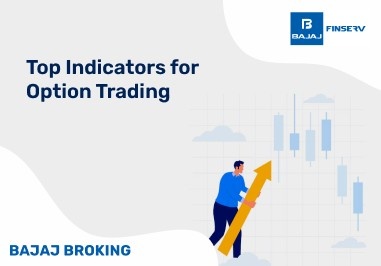BAJAJ BROKING
PDP Shipping & Projects IPO is Open!
Open a Free Demat Account
Trade Now, Pay Later with up to 4x
Track Market Movers Instantly
Share Market Today | Gift Nifty Indicates Flat Opening; Nifty Likely to Consolidate
Synopsis:
Today’s share market features how Hindustan Unilever spun off its ice cream business amid restructuring, Sona BLW acquires Railway Equipment Division of Escorts Kubota for ₹1,600 crore, and the Oil Ministry seeks removal of the windfall tax on crude oil. CONCOR divestment is delayed, while FIIs net sold ₹5,684.63 crore and DIIs net bought ₹6,039.90 crore in equities yesterday.
Latest Market News
1. Hindustan Unilever to spin off its ice cream business amid strategic restructuring.
2. Sona BLW approves the acquisition of the Railway Equipment Division Business of Escorts Kubota For ₹1,600 crore.
3. Oil Ministry Has Sought Removal Of Windfall Tax On Crude.
4. CONCOR: Sources say Concor's Divestment plan was postponed.
5.FIIs net sell ₹5,684.63 crore while DIIs net buy ₹6,039.90 crore in equities yesterday.
HINDUSTAN UNILEVER LTD.
Trade2192.9-24.05 (-1.08 %)
In-Depth Market Insights: Global Outlook, Derivatives & More
US Share Market News
Performance Overview:
U.S. stocks fell on Wednesday as Treasury yields continued to climb on concerns about a more shallow outlook for the FED's rate cut cycle. Losses in the Technology, Consumer Services and Consumer Goods sectors propelled shares lower.
Sector-Specific Movements:
The S&P 500 fell 0.9% to 5,797.42 points, while the NASDAQ Composite slid 1.6% to 18,277.41 points. The Dow Jones Industrial Average fell nearly 1% to 42,514.95 points.
Treasury yields continued to rise on Wednesday as investors brace for further remarks from Fed officials likely to caution against expectations for a deep rate-cutting cycle following recent data pointing to economic strength.
3. Economic Indications:
The economic data calendar is relatively quiet this week with existing home sales for September the main release.
FOMC member Michelle Bowman is also scheduled to speak, and her views on future monetary policy given the shifting expectations of the Federal Reserve being less aggressive in its easing over the next few months.
Focus is turning towards the U.S. presidential election, with investors also increasingly positioning ahead of the Nov. 5 polling day.
Focus will also be in the upcoming earnings prints, as well as key purchasing managers index data, which is set to provide more cues on the U.S. economy.
Other Asset Classes
Treasury Yields:
The U.S. 10-year Treasury yield rose again Wednesday as traders digested the latest comments from Federal Reserve officials on the trajectory of interest rate cuts. The yield on the 10-year Treasury rose more than three basis points to about 4.24%.
Currency:
The dollar strengthened beyond 153 against the yen for the first time in nearly three months on Wednesday on an expected divergence among major global central banks’ pace of interest rate cuts. The dollar index rose 0.38% to 104.49.
Commodities:
Gold prices fell over 1% after hitting a record high on Wednesday, as a stronger dollar and a rise in U.S. Treasury yields countered support from safe-haven demand linked to the Nov. 5 U.S. election and Middle East war. Spot gold was down 1% to $2,721.12 per ounce.
Oil prices fell on Wednesday after data showed U.S. crude inventories rose by more than expected even as refining activity rebounded, though futures remained up about 2% this week as traders factored in the continuing conflict in the Middle East. Brent crude futures dropped $1.08, or 1.42%, to close at $74.96 a barrel.
Asian Markets
General Trends:
Asia-Pacific markets fell on Thursday morning trade after U.S. stocks dropped overnight, with the Dow Jones Industrial Average posting its worst day in more than a month.
Specific Index Performance:
South Korea’s benchmark Kospi was down 0.32% after the GDP announcement, while the small-cap Kosdaq fell 0.91%.
Japan’s Nikkei 225 tumbled 0.68% in early trade, while the Topix lost 0.82%.
India Market Outlook
GIFT Nifty Projection:
Gift Nifty suggests a flat opening in the Indian market. Nifty spot in today's session is likely to consolidate in the range of 24250-24600.
Market in Previous Session:
The benchmark indices declined for the third session in a row on Wednesday. Sensex and Nifty both gave up intraday gains and closed in negative territory.
The Sensex dropped 138 points or 0.2% to close at 80,081, while the Nifty slipped 37 points to 24,434. Despite strong performances in IT stocks, driven by robust earnings from Persistent Systems and Coforge, declines in the auto and construction sectors dragged the Nifty 50 lower.
The market's struggle to maintain its early gains can be traced to a mix of global and domestic challenges.
Geopolitical tensions in the Middle East, concerns about Foreign Institutional Investors (FIIs) pulling back due to China's stimulus measures, and uncertainty around the upcoming U.S. presidential election have fuelled investor caution. On the domestic front, slowing Q2 earnings growth has added to the pressure.
Following the recent market decline, the midcap and small-cap segments saw some buying interest through bargain buying in yesterday's session.
The BSE Midcap index gained 0.5%, while the BSE Smallcap index climbed 1%, as investors sought opportunities in these sectors.
Nifty Short-Term Outlook:
Index has formed an inverted hammer-like candle near the 80% retracement of the previous up move (23894-26277). Index however continues to form lower high and lower low signalling extension of the downward bias.
Nifty has recently generated a breakdown below the 11-session trading range (24700-25250), highlighting corrective bias and extension of decline towards 24250 levels in the coming sessions, being the measuring implication of the last 11-session range.
The index needs to form higher highs and higher lows on a sustained basis to signal a pause in the downtrend. Failure to do so will keep the bias down with resistance at 24800-24900. Immediate support is placed at 24300-24250, while key short-term support is at 24000-23800 levels, being the low of August 2024.
Intraday Levels:
Nifty: Intraday resistance is at 24,580 followed by 24,700 levels. Conversely, downside support is located at 24,370, followed by 24,250.
Bank Nifty: Intraday resistance is positioned at 51,450, followed by 51,750, while downside support is found at 50,900, followed by 50,550.
Derivative Market Analysis
Nifty:
The highest call OI is positioned at 25000 followed by the 24800 level, whereas the highest put OI is positioned at the 24000 level.
Call OI addition was seen at 24600 and 25000 along with put unwinding at 24500 and 24800 indicating stiff resistance at higher levels. Put writers are active at 24200 indicating support at lower levels.
According to option chain analysis, a broader range for Nifty is 24200 and 24800.
The Nifty put-call ratio is now positioned at 0.79.
Bank Nifty:
The highest call OI is positioned at 52000 followed by the 52500 level, whereas the highest put OI is positioned at 51000 followed by the 51500 level.
Huge call OI addition was seen at 52000 and 52500 strikes indicating stiff resistance at higher levels. Put writers are active at 51000 indicating support at a lower level. Straddle formation is seen at 51500 which makes it a crucial level for the index.
According to option chain analysis, a broader range for Bank Nifty is 51000 and 52000.
The Bank Nifty put-call ratio is now positioned at 0.85.
Stay on top of the latest market news with Bajaj Broking’s insights. Our point-to-point expert analysis digs deep into the surface, empowering you with a unique perspective on domestic and global stock market events. Get all the current share market news, including US share market updates in one place and make wise investment decisions.
Disclaimer: Investments in the securities market are subject to market risk, read all related documents carefully before investing.
This content is for educational purposes only. Securities quoted are exemplary and not recommendatory.
For All Disclaimers Click Here: https://bit.ly/3Tcsfuc
Read More Blogs
Our Secure Trading Platforms
Level up your stock market experience: Download the Bajaj Broking App for effortless investing and trading













